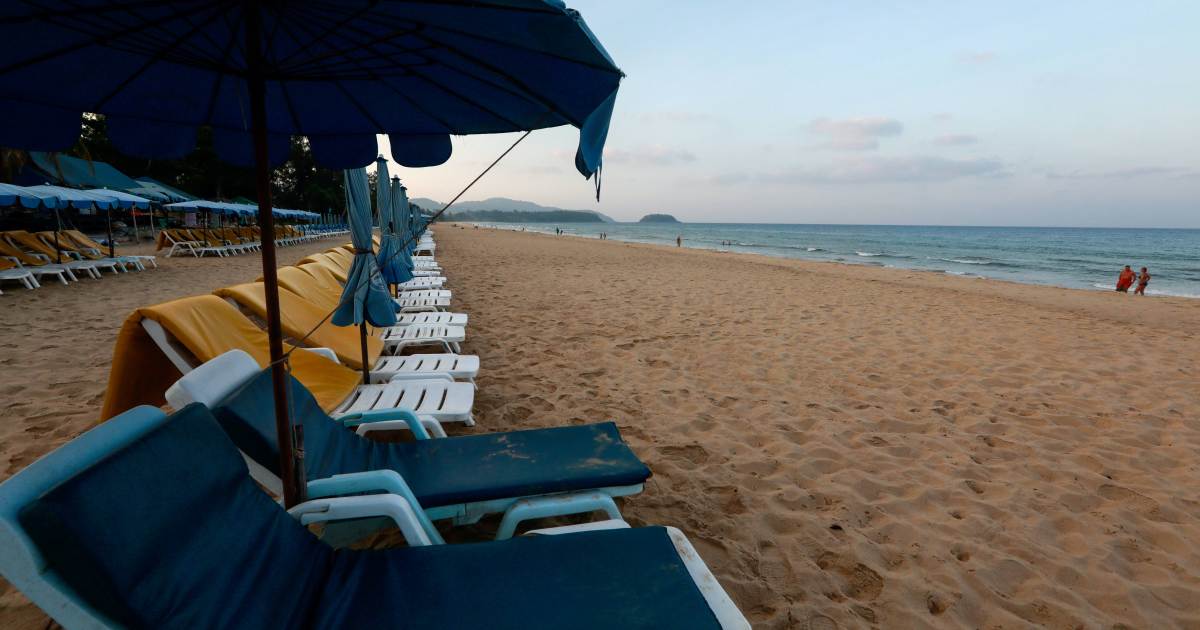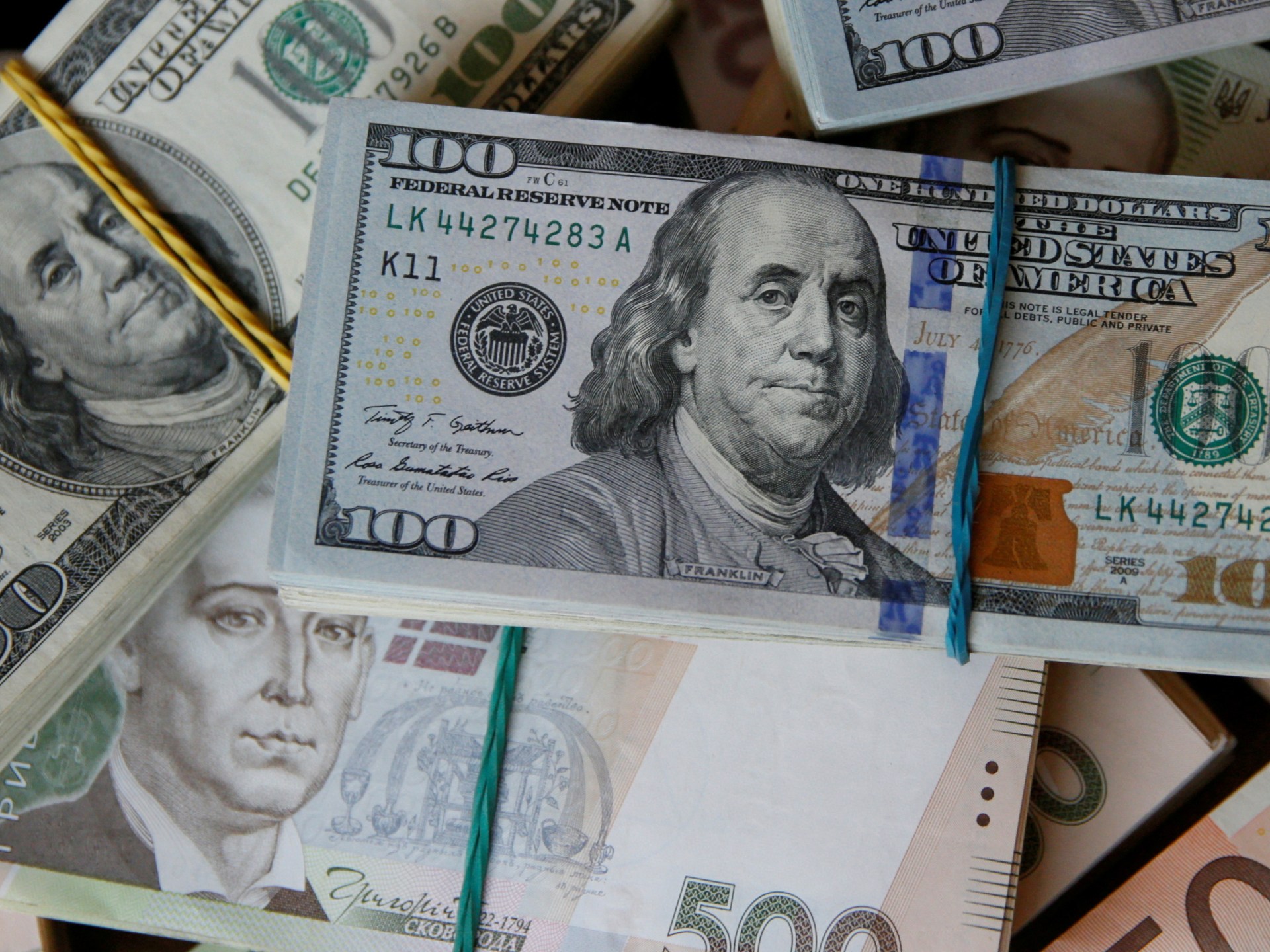Russia and the West are moving towards full out economic war
Russia and the West have been engaged in a sporadically escalating series of economic skirmishes for eight years. So far, this economic tug of war had some notable effects on Russia, but barely affected the wider global economy. With Russia’s unprovoked war of aggression on Ukraine unfolding at a devastatingly rapid pace, however, that is likely to change.
The first move in this war was made by Russia and involved Ukraine. In December 2013, at the height of the Euromaidan protests, Moscow presented the pro-Russia government of Viktor Yanukovych with a highly complex $3bn loan, which was laden with unique clauses that gave it significant economic leverage over Ukraine’s future.
Just a few months later, in February 2014, protesters deposed Yanukovych’s regime, and a new debate emerged about whether Ukraine should pay Russia back.
When Russia launched its initial invasion of Ukraine, seizing Crimea that March, the Obama administration blacklisted a host of Kremlin officials and announced a tailored new sectoral sanctions regime. It aimed to impose direct economic costs on the Russian state and key enterprises. Although slightly less stringent and expansive, the European Union imposed similar restrictions.
The United States also moved to help economically rescue Ukraine and manage its post-war debt restructuring, with the International Monetary Fund adjusting its rules in a way that defanged Russia’s earlier loan chicanery. Russia’s then-Prime Minister Dmitri Medvedev likened the move to “opening Pandora’s box” for the global financial framework.
The new US measures included limitations on Western investment in Russia’s oil and gas industry but more significantly restricted the ability of affected companies to raise Western financing. Russia’s state-owned oil company Rosneft went from being among the largest emerging market creditors to Western banks to being all-but cut-off from such loans. It had to be bailed out by the end of 2014, an action that was taken with the complicity of Russia’s Central Bank, despite it sending the ruble into free fall. Credit for other Russian entities declined as well, and the previous spate of Russian IPOs on London’s Stock Exchange ground to a halt.
After Donald Trump took office in 2017, the Republican-controlled Congress remained sceptical about his comments during the transition in which he criticised the Obama administration’s sanctions strategy and praised Vladimir Putin’s response. In a rare act of bipartisan unity, Congress overwhelmingly passed the Countering America’s Adversaries Through Sanctions Act, 419-3 in the House, 98-2 in the Senate. It further tightened the financial limitations of the sectoral sanctions and imposed and expanded other sanctions over the Russian defence and extractive sectors.
Russia responded to these measures with efforts to build up a “fortress balance sheet’. As a result, Russia’s net reserve position exceeded its net foreign debts by mid-2018. This response has not been without substantial costs for Russians, with underinvestment from the state and the weakened ruble helping simultaneously drive up inflationary pressures.
But Russia has also quietly inserted clauses into its own foreign bond contracts that could have substantial costs for foreign holders of Russian debt if triggered. It also expanded its own willingness to finance efforts to weaken the US-led international financial order, including underwriting a comically botched effort by the Maduro regime in Venezuela to launch a cryptocurrency to evade US sanctions.
Moscow has had some more success in moving to de-dollarise its own economy, although this has still been notably circumscribed by the fact that Russia is a hydrocarbon-dependent economy and oil and gas are nearly universally priced in US dollars. Russia has largely only been able to reach agreements with partners to settle related transactions in other currencies, though they were still ultimately usually priced in dollars.
There had been sporadic indications in recent years that the economic war was cooling, though they always proved short-lived. Russia’s power and metals conglomerate EN+ listed on the London Stock Exchange in November 2017, but its key shareholder, Oleg Deripaska, was sanctioned by Washington less than a year later.
Although President Trump would continue to raise controversy for his occasional praise of Putin, the move to sanction Deripaska demonstrated that at least some in his Administration, which he often barely controlled, was at least as dedicated as Congress to not standing down from these economic skirmishes.
Yet Trump would approve a controversial deal loosening the sanctions on Deripaska nine months later; Deripaska has since been investigated by the FBI for violating sanctions imposed on him. He would then belatedly introduce more restrictions on Russian debt for its attempt to assassinate ex-double agent Sergei Skripal in the UK in March 2018.
Upon taking office, the Biden administration reset the sanctions policy, focusing on both blacklisting individuals and entities and restricting Russia’s access to financing. It also sought to clearly signal what steps by Russia would warrant further escalations.
This has evidently not deterred the Kremlin. Regardless of where one comes down on the argument about whether Putin’s renewed invasion of Ukraine was pre-ordained or the result of a failure of diplomacy – we will only know whether Putin’s display of madness during his February 22 incantation of war was genuine or show when the archives are opened, and it is impossible to imagine that ever happening now – the threatened Western sanctions now loom.
The US and EU responded to Putin’s recognition of the Russian proxy administrations in Donetsk and Luhansk by announcing that they will sanction Russian primary debt issuance. After yet another embarrassing communications kerfuffle from Boris Johnson, the UK government announced it, too, would take similar action. The US has already sanctioned Russia’s Vnesheconombank (VEB), a bank often dubbed Putin’s “slush fund” but which also sits at the centre of the country’s foreign payments plumbing.
The initial US round of sanctions announced on February 23 already included a ban on secondary trading of Russian debt issued after March 1. The Biden administration has threatened to go further if Russia goes further, however, and new measures are imminent. These will include large numbers of individual members of the Kremlin elite and their cronies, but blacklisting individuals can only go so far.
The US and EU – and the UK, too, once it gets its act together – will move to effectively cut off Russia from global financial markets. This will have wide-ranging economic impacts, as Biden himself has already acknowledged. Russia will respond by taking action to weaponise its own debt stock in the event of a freeze, but also likely intentionally seek havoc on hydrocarbon markets. Medvedev has promised Europe should prepare for sky-high gas prices for the foreseeable future. The effects will be felt far beyond Europe. Russia and Ukraine remain the key global breadbaskets in terms of grain production, and Russia has slowly been consolidating political control over its grain trading and fertiliser industries. The aforementioned Deripaska sanctions sent aluminium markets into a tail-spin and many metals could be similarly affected again in the current crisis. Russia will also further invest in efforts to undermine the US-led financial order, though it cannot have any hope of success here without full coordination with China at a minimum.
The US and the rest of the West’s political leadership appear braced for the fight. Washington is already bringing non-traditional allies – Singapore, Japan, and Taiwan – on board. But sustained inflationary pressure and market turmoil will undoubtedly have an impact. However, given the Kremlin’s unilateral aggression, there is no alternative.
Nevertheless, policymakers and the public must bear in mind that debt sanctions and economic wars emerging from smaller conflicts have been the key precursors to major wars when they have not been matched by increased diplomatic efforts – one can look to US President Franklin Delano Roosevelt’s 1941 invocation of the Trading with the Enemy Act to freeze Japan out of dollar markets before World War II or German Chancellor Otto Von Bismarck’s own 1887 ban of Russian debts that began the reversal of their alliance before World War I.
The outbreak of a fully-fledged Russia-Western economic war means that turmoil in agricultural, metals and hydrocarbons markets is here to stay. Yet the real costs are in what that may lead to.
The views expressed in this article are the author’s own and do not necessarily reflect Al Jazeera’s editorial stance.




